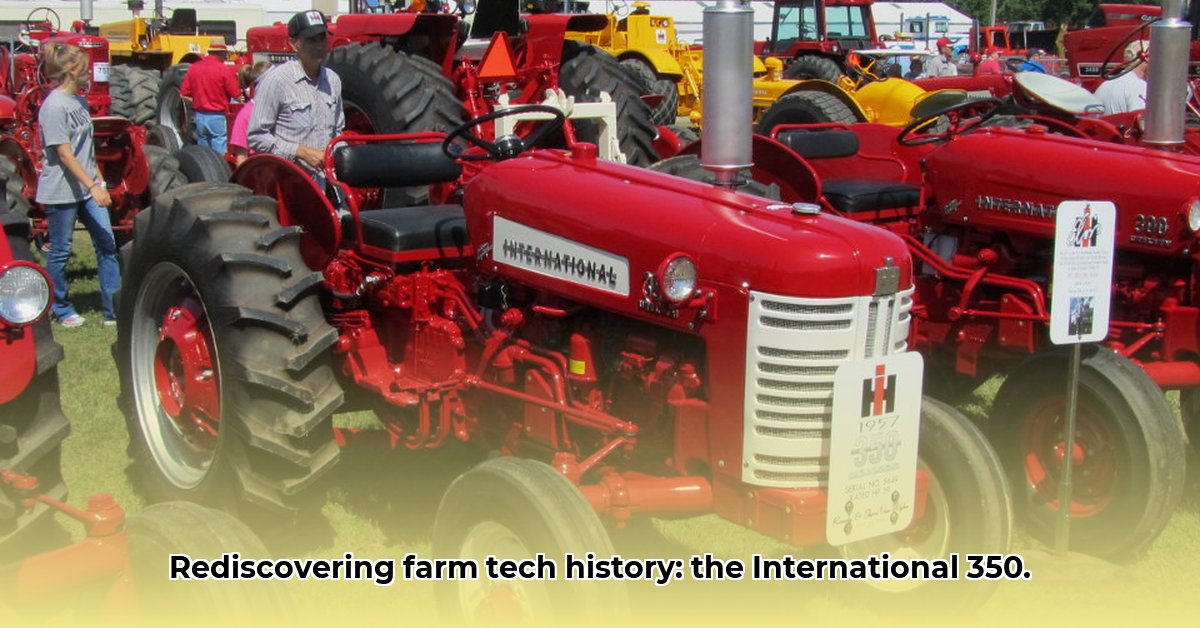
The International Harvester 350 utility tractor, a stalwart of the late 1950s, holds a significant place in agricultural history. This article provides a comprehensive retrospective, examining its design, performance, maintenance, and environmental impact within the context of modern sustainable farming practices. We'll explore its strengths and weaknesses, considering the technological advancements of the past 70 years. For more on similar models, see this page on International Harvester Utility Tractors.
Power and Performance: A Measured Assessment
The International 350's power output, while impressive for its time (claimed horsepower varied by model and engine type), pales in comparison to modern tractors. The exact figures remain somewhat elusive due to inconsistencies in historical documentation and testing methodologies. However, it's clear that its relatively low horsepower and lack of features like power steering meant demanding physical labor for the operator. Did this lower power output significantly impact productivity compared to contemporary alternatives? Further research is needed to answer this question definitively. A quantitative analysis comparing its work output per hour to modern tractors would be beneficial.
Design and Functionality: Simplicity and its Trade-offs
The IH 350's design prioritized mechanical simplicity and adaptability. This is evident in its relatively straightforward mechanical systems and its availability in various configurations (utility, high-clearance, wheatland) to cater to diverse farming needs. However, this simplicity came at a cost. The absence of modern conveniences such as power steering and a closed cab exposed operators to the elements. How did these design choices impact operator comfort and safety? A review of historical operator manuals and contemporary accounts would shed light on this aspect.
Maintenance and Long-Term Costs: A Historical Perspective
Maintaining an IH 350 presents unique challenges. The age of the machine necessitates sourcing replacement parts, a task that can be both time-consuming and expensive. Further complicating matters is the limited availability of precise records documenting maintenance and repair costs during its operational lifetime. Was the initial purchase price offset by higher long-term maintenance costs? A comparative cost analysis against contemporary tractors would shed light on this aspect. The relatively small fuel tank capacity also influenced its practicality for large-scale operations, particularly compared to modern tractors with significantly larger tanks.
The Environmental Footprint: A Sustainable Evaluation
Assessing the IH 350's environmental impact requires a nuanced approach. While its fuel consumption (gasoline, diesel, or LPG) was considerably higher than that of modern tractors, the overall environmental impact is complex. Manufacturing practices in the 1950s lacked the environmental regulations of today. Further research is needed to quantify its CO2 emissions per unit of work. Additionally, the tractor's weight could contribute to soil compaction, a significant concern in modern sustainable agriculture. Did the use of this tractor, compared to animal-powered farming, result in a net positive or negative environmental impact? A thorough life-cycle assessment is needed to confidently answer this.
Key Specifications (Partial)
| Feature | Specification | Notes |
|---|---|---|
| Engine Options | Gasoline, Diesel, LP Gas | Choice dependent on specific model and configuration. |
| Horsepower (Claimed) | Varied depending on engine and configuration | Manufacturer claims may differ from real-world performance. |
| Wheelbase | Varied depending on configuration | Differs between utility, high-clearance, and wheatland models. |
| Fuel Tank Capacity | Varied depending on configuration | Generally smaller than modern tractors. |
A Legacy of Innovation: Concluding Thoughts
The IH 350, a product of its time, reflects the agricultural practices and technological capabilities of the mid-20th century. While its simplicity and adaptability were noteworthy assets, this tractor also presents limitations regarding environmental impact and maintenance costs, particularly compared to contemporary machinery designed with sustainability in mind. Further research, including comprehensive life-cycle assessments and comparative analyses with modern tractors, is essential for a complete understanding of its historical and environmental significance.
Three Pivotal Points:
- Technological Simplicity: The IH 350's straightforward mechanical design, while advantageous in some ways, lacked the features and efficiencies of modern tractors.
- Maintenance Challenges: Sourcing parts and maintaining this vintage tractor present significant challenges and costs.
- Environmental Impact: The IH 350's high fuel consumption and potential for soil compaction raise environmental concerns in a modern context.